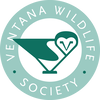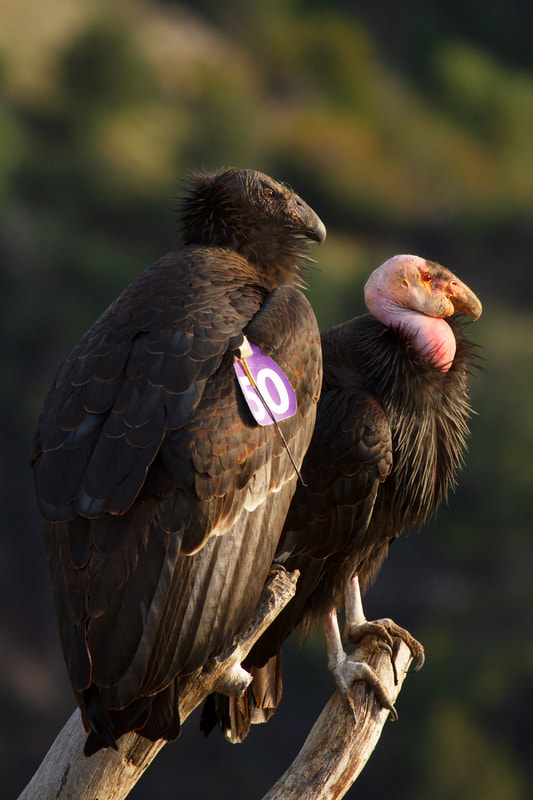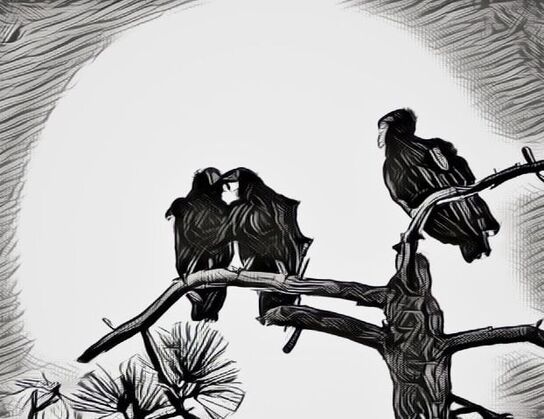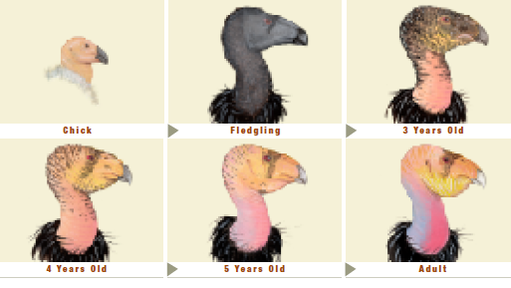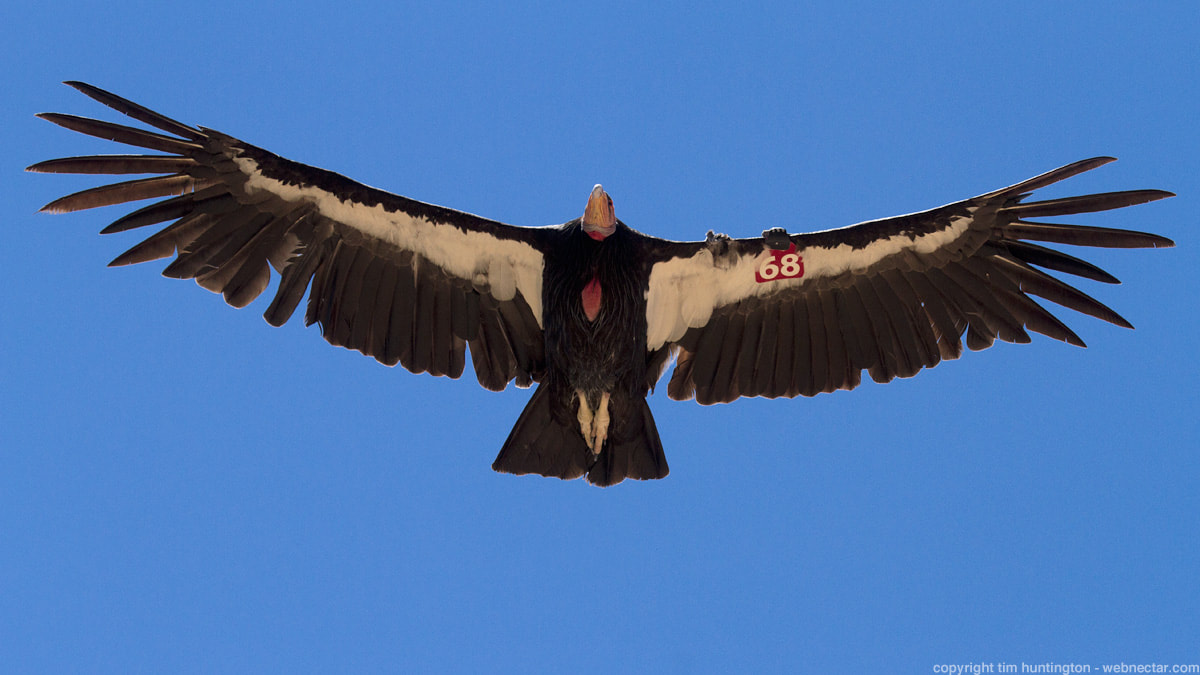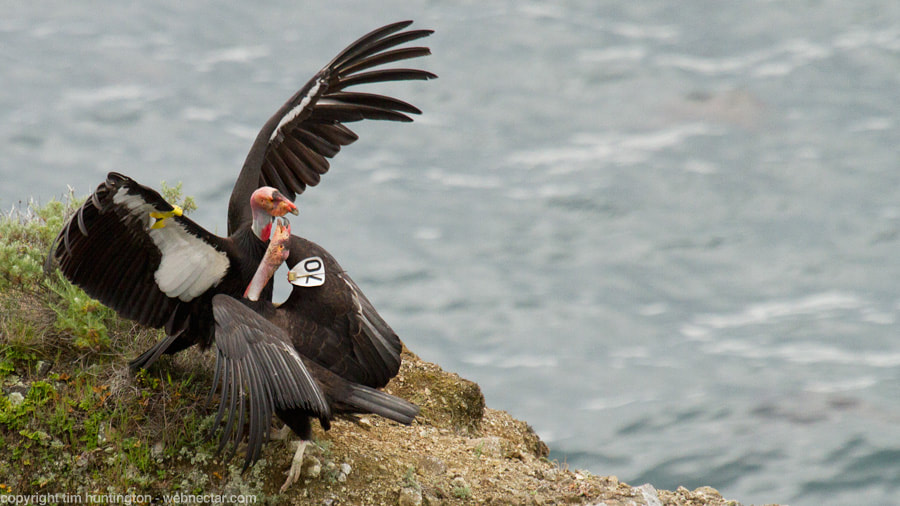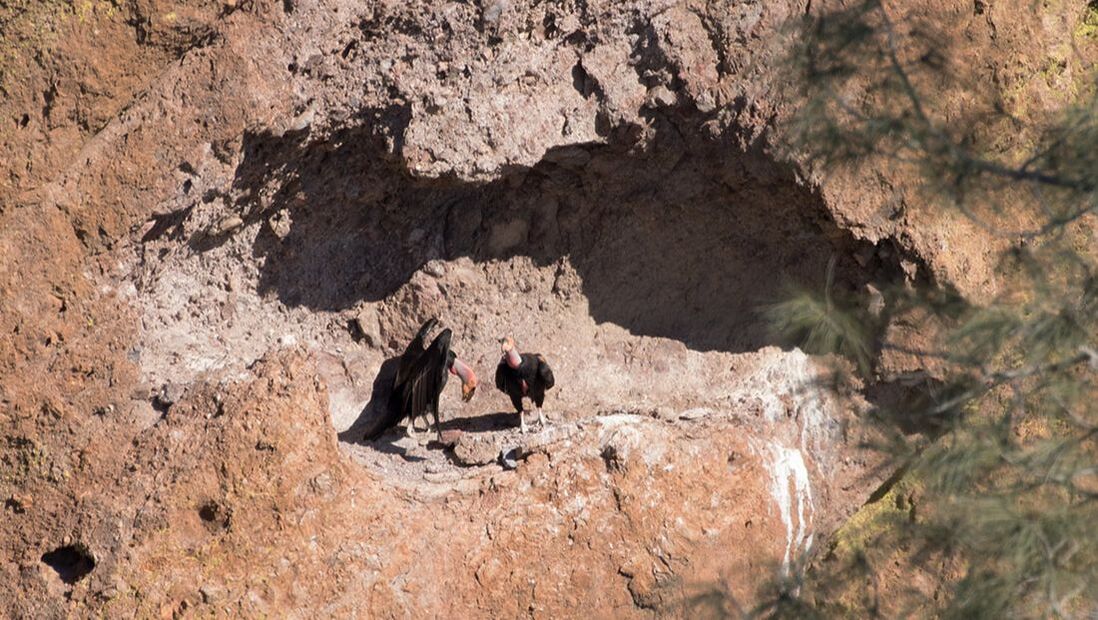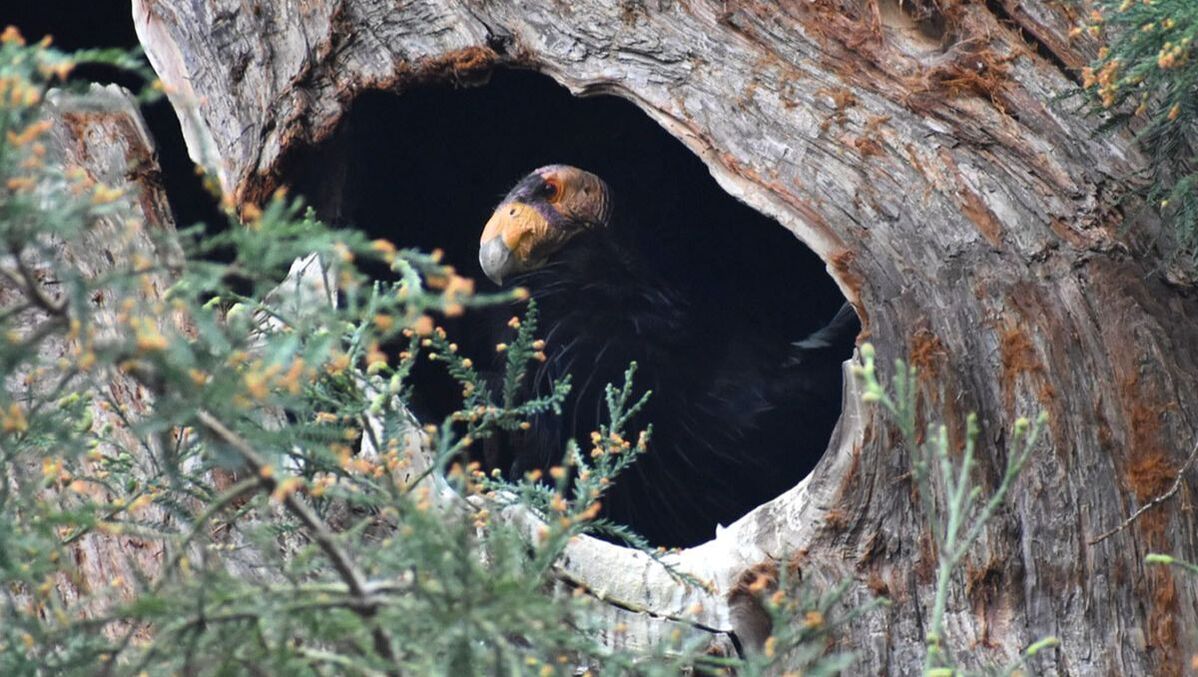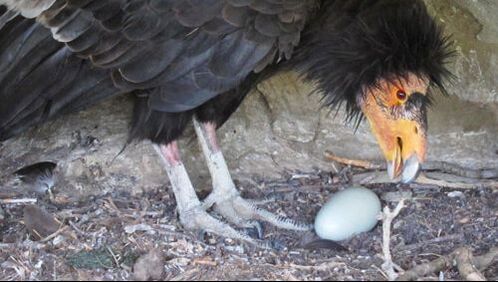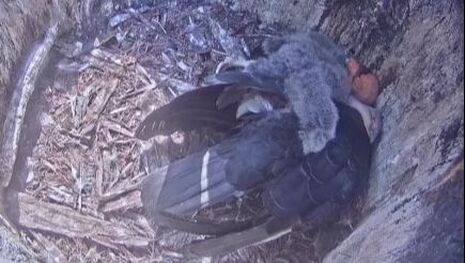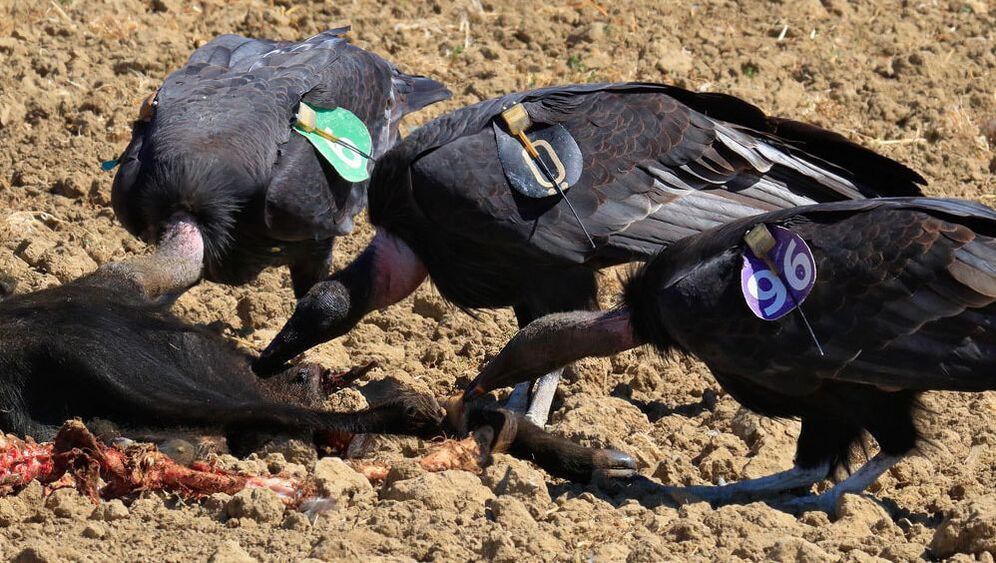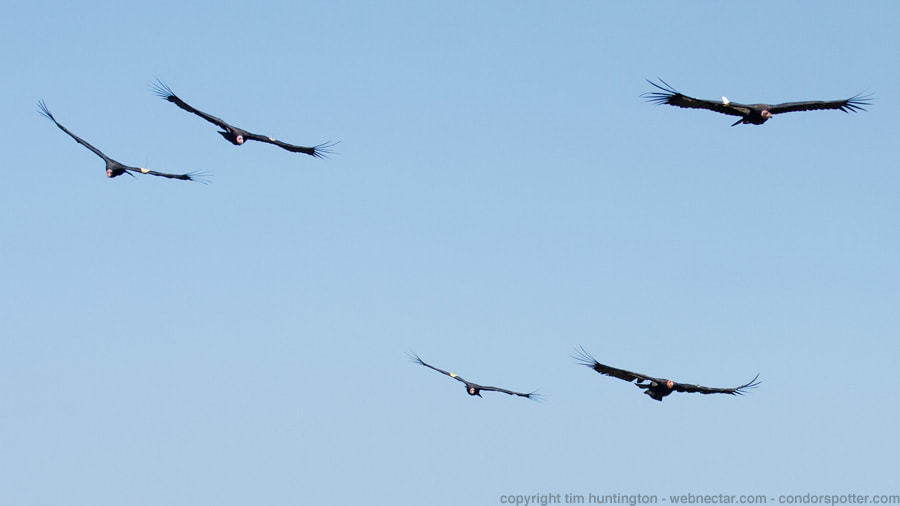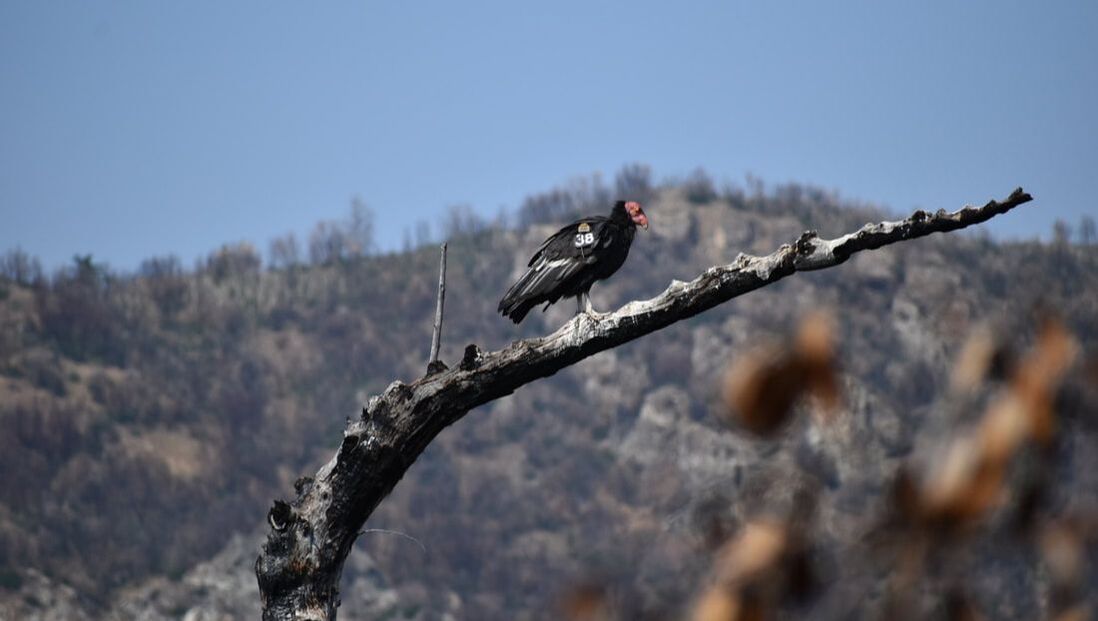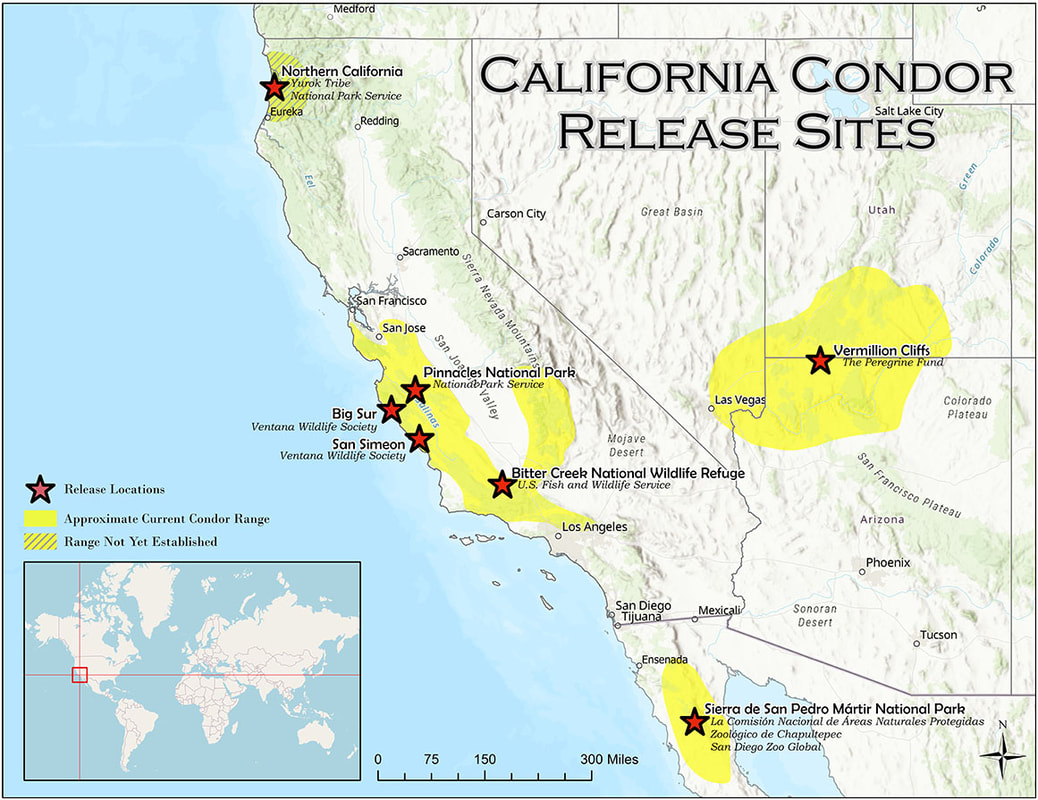California Condor Story
|
By the 1980s, the California Condor (Gymnogyps californianus) population was in crisis, and extinction in the wild seemed imminent. The dramatic decline of condors in the 20th century has been attributed to shooting, poisoning, electric power lines, egg collecting, and habitat loss. In 1987, the last wild California Condor was taken into captivity to join the 26 remaining condors in an attempt to bolster the population through a captive breeding program. At that time, it was uncertain whether or not North America's largest flying land bird (by wingspan, 9.5 feet) would ever again soar in the wild.
As the fate of the species hung in the balance, Ventana Wildlife Society began releasing captive-bred condors in 1997 to restore a population along the central California coast. Since then, we have monitored their population growth, their prolific scavenging on marine and land mammals, and their success nesting in the wild. These magnificent birds are self-sufficient in most respects, but full recovery of the population is still threatened by lead poisoning. We continue to manage the central California flock with the National Park Service, moving ever closer to our goal of a self-sustaining population.
the story of the california condor, continued...
With the success of the captive breeding program, led by the San Diego and Los Angeles zoos, attention turned to releasing some condors into the wild. Beginning in 1992, condors were released in former strongholds in southern California. In 1996, condors were released in Arizona, near the Grand Canyon. Monterey County, along the central California coast, was also part of the historical range of California Condor. In fact, Spanish explorer Father Antonio de la Ascension recorded the earliest known record for condors with his sighting in Monterey Bay in 1602. The type specimen was collected in Monterey County in 1797. In 1997, Ventana Wildlife Society began releasing California Condors on the Big Sur coast, in Monterey County. We are proud to join U.S. Fish and Wildlife Service, California Department of Fish and Wildlife, The Peregrine Fund, National Park Service, Zoological Society of San Diego, Los Angeles Zoo, Oregon Zoo, and most recently Oakland Zoo in re-establishing, monitoring, and managing wild populations of California Condors.
Because of our efforts, combined with the efforts of our neighbors at Pinnacles National Monument, the California Condor population in central California is growing. An exciting discovery was made in 2006, when a Big Sur condor pair was found nesting in the burned-out cavity of a Coast Redwood. This was the first known nesting attempt in northern California in more than 100 years, and the first known nesting in a Coast Redwood. That same year, condors were discovered feeding on a Gray Whale carcass on the Big Sur coast, something not observed since Lewis and Clark observed condors feeding on a Gray Whale carcass near the mouth of the Columbia River in 1805. Although we are encouraged with the progress of recovery for the central California population, we recognize the continuing threats these birds face. Condors are scavengers which feed exclusively on carcasses, and they can be poisoned by contaminants in those carcasses. Lead poisoning, as a result of lead bullet fragments in carcasses or waste piles, remains foremost among threats, despite the recent ban on lead bullets in the condor's range. To help condors, we provide a source of non-lead carcasses and regularly trap and treat condors suffering from high blood levels of lead. To promptly detect health problems, our biologists account for each condor on a near-daily basis using radio tracking. Prompt treatment has saved the lives of several birds in the flock. We also monitor nests to ensure the greatest protection possible from potential threats to productivity. We hope that someday California Condor recovery will be sufficient for scaling back management efforts. What will it take? The goals for the California Condor Recovery Program are two self-sustaining wild populations (California and Arizona) and one captive population, each with at least 150 birds, and 15 breeding pairs. Because wild populations in both California and Arizona are still below this target, and require management assistance to sustain growth in the population, there is still much work to be done. CONDOR MILESTONES (1602 - 2017)
• Prehistory – California Condors range along both coasts from British Columbia to Baja California and from New York to Florida. • 1602 – First recorded condor sighting by a European, Father Antonio de la Ascension, in Monterey Bay. • 1805 – Lewis and Clark report sighting a condor, calling it "beautiful buzzard of the Columbia". • 1939 – National Audubon Society researcher Carl Koford begins landmark field studies. Koford estimates 60-100 condors remain in the wild. • 1967 – California Condor is included in the first federal list of U.S. endangered species. • 1975 – California Condor Recovery Team is established and the recovery plan is adopted. • 1979 – 25-35 California Condors remain in the wild. Cooperative California Condor Conservation Program is formed. • 1980-1987 – Field investigations and management programs include radio telemetry and captive incubation of wild eggs. • 1982 – Only 22 California Condors remain in the wild. • 1983 – First successful hatching for a wild California Condor egg in captivity. • 1987 – Last wild California Condor taken into captivity. Only 27 condors remain in captive breeding facilities at Los Angeles Zoo and San Diego Wild Animal Park. • 1988 – First successful breeding of captive California Condors at the San Diego Zoo. • 1992 – Two captive-bred California Condors reintroduced into the wild, accompanied by two Andean Condors. • 1993 – Third California Condor breeding center established at World Center for Birds of Prey in Boise, Idaho. • 1994 – Captive California Condors have laid a total of more than 100 eggs. • 1996 – California Condor population reaches 103, including 13 in the wild. Releases begin in San Luis Obispo County, California, and near the Grand Canyon, Arizona. • 1997 – Releases begin in Monterey County by Ventana Wildlife Society. • 1999 – California Condor population reaches 147, including 50 in the wild. The Big Sur flock is documented feeding on sea lion carcasses for the first time. • 2000 – AC8 is the first of the wild-born birds re-released into the wild. • 2001 – The Oregon Zoo joins the Recovery Program as the fourth captive breeding partner. • 2002 – First chick born in the wild successfully fledges in Ventura County. Condors are released in Baja California. • 2003 – Condors are released at Pinnacles National Monument, San Benito County, California. • 2004 – AC9, the last condor taken from the wild in 1987 re-released in southern California. • 2006 – First nesting attempt for the re-introduced flock in Big Sur. The nest fails and eggshell fragments recovered are found to be thin. Condors in this flock observed feeding on a Gray Whale carcass for the first time in over 200 years. • 2007 – Eggshell thinning research initiated in Big Sur. Wild-laid eggs are switched out with captive-laid eggs and hatched in captivity to maximize nest success. • 2008 – First chick from a wild-laid egg fledges in the wild in Big Sur and survives, two additional chicks from captive-laid eggs fledge and one survives. The number of free-flying condors exceeds the number in captivity for first time in over 20 years. The use of lead bullets is outlawed in California within condor range. • 2009 – First nest in San Benito County. In central California, 4 chicks successfully fledge in the wild and survive (one from a wild-laid egg and three from captive-laid eggs). • 2010 – In central California, two chicks fledge in the wild (one from a wild-laid egg and one from a captive-laid egg). Broken egg discovered in Big Sur with thin eggshell fragments. • 2011 – Ventana Wildlife Society acquires 80 acres of land referred to as the "Condor Sanctuary". This remote coastal canyon surrounded by the Ventana Wilderness in Big Sur, California is where the reintroduction has taken place since 1997. As of March, the global population is 192 wild and 177 captive birds. • 2012 – Condors 663, 664, and 665 fledged from nests in the wild in central California. Death of Condor 318 from lead toxicosis; a .22-caliber lead bullet is recovered from the digestive tract of this bird. The global population reaches 231 birds in the wild and 176 in captivity (as of November). • 2013 – Assembly Bill 711 is passed requiring the use of non-lead ammunition when taking wildlife throughout California. A difficult year for the central California population, due to the deaths of several more condors and reproductive failure at all local nests. The central California population dips to 61 birds, and the global population is 217 birds in the wild and 203 in captivity (as of September). • 2015 – Ventana Wildlife Society opens new release site at San Simeon to increase condor distribution along the central coast. Central coast population is at 70 birds and the global wild population is approaching 240. • 2017 – Our first nest by two wild-fledged birds. Young breeders at the age of 8 and 7, this pair is an example of successful recruitment of breeding birds, and growing momentum toward a self-sustainable population. • 2019 - Condor population in central California reaches 101 birds and total in wild is 302. Safety for All Act implemented requiring face-to-face ammunition purchases. • 2020 - The Dolan Fire destroys the Big Sur Condor Sanctuary, killing a total of ten free-flying condors plus two chicks, the worst fire-related event in condor history. • 2021 - Condor population in central California reaches 94 individuals, still below the number in 2019. Total wild population in all locations reaches 337. • 2023 - the wild population in central California slips further to 91 individuals due to excessive mortality largely caused by lead poisoning and despite ongoing releases of captive-bred condors to the wild. |
|
CondorKids.org
Created by our partners at Santa Barbara Zoo and U.S. Fish and Wildlife Service, CondorKids.org is a place for students to learn about the California Condor Recovery Program including access to free, downloadable, condor-centric curriculum. |
California Condor Biology
Lifespan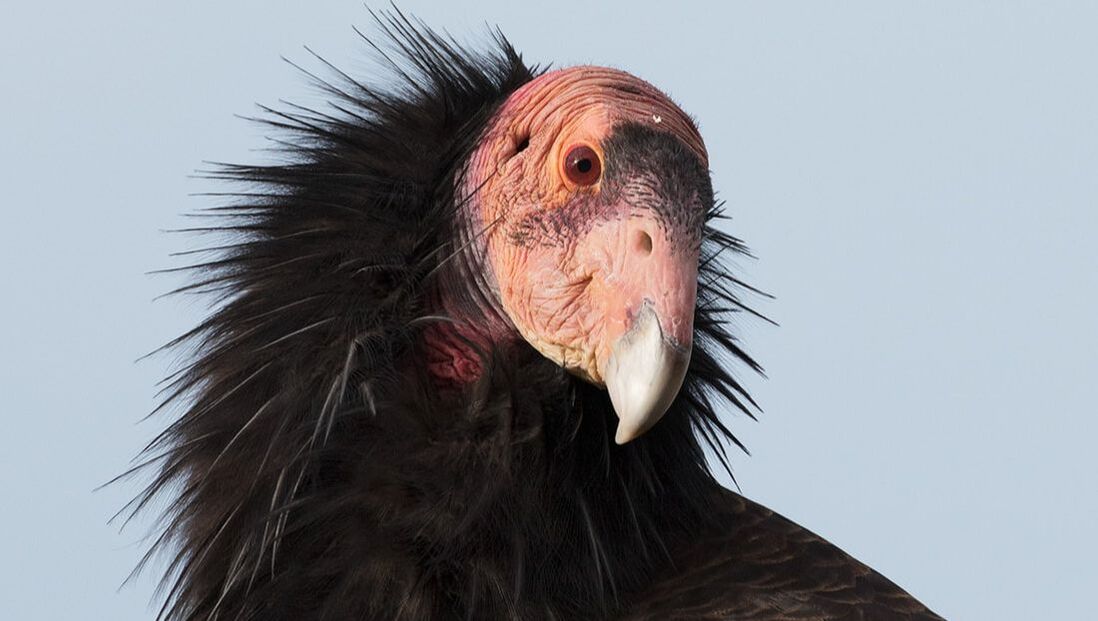
California Condors can live 60 or more years.
My Condor Bios Vertical Divider
|
Plumage |
WingspanVertical Divider
With a wingspan of approx 9.5 feet, California Condors are among the largest flying birds in the world. Individuals weigh between 16 and 25 pounds.
Condor Cams |
Size ComparisonThe California Condor (approx 9.5 feet) is unmistakable when seen from a clear vantage point. At a distance, they can be confused with the common Turkey Vulture (approx 6 feet), which are much smaller and do not show the prominent white triangles from below on the leading edge of their wings. Bald Eagles (approx 7.5 feet) are also slightly smaller and do not show the same pattern on the wings.
Vultures of the World |
PairingCalifornia Condors reach breeding age when they are 6-8 years old. They are generally considered monogamous and form lifelong bonds. However, some condors nest in trios rather than pairs. These trio groups can include two males and one female, or two females and one male.
Condor Cams Vertical Divider
|
Nesting SeasonCalifornia Condors begin nesting early in the spring, often as early as February. Hatching, development of the chick, fledging, and post-fledging care of the chick continues for the next year plus. Therefore, the pair is unlikely to be available to nest again the following spring, resulting in an “every other year” type of nesting cycle.
Nesting Condors |
Nest SitesCalifornia Condors select nest sites in high cavities of redwood trees, where these trees occur, or in caves, crevices, or ledges on cliff faces or rocky slopes. They use a natural substrate and do not build a nest like eagles and most raptors.
Nesting Condors Vertical Divider
|
EggsCalifornia Condors lay one egg per year. Parents take turns incubating the egg until it hatches at about 57 days. If the egg is depredated or fails to hatch, another “replacement” egg might be laid if it is early enough in the season for another nesting attempt.
Condor Cams |
ChicksBoth parents share responsibility for providing the chick with food and warmth. Parents feed the chick by regurgitating food from its crop directly into the mouth of the chick. The chick takes its first flight at about six to seven months of age but may not become fully independent until the following year.
My Condor Bios Vertical Divider
|
DietCalifornia Condors feed on a variety of dead animals, including land mammal carcasses like deer, pigs, and ground squirrels, and marine mammals like whales and sea lions.
Condor Cams |
Daily Movements |
Habitat |
|
California Condors can fly over 200 miles in a day, but movements can vary by season and age of the individual. The long days of spring and summer support increased movement, and sub-adult condors tend to travel more than territorial breeding-age adults. Columns of rising air, called thermals, assist the condors on their journeys by giving them free lift and allowing them more energy-efficient soaring flight.
Condor Field Work Vertical Divider
|
Usually associated with mountains and rugged terrain where conditions favor prolonged soaring flight. The ocean breezes meeting the steep slopes along the Big Sur coastline provide condors with the lift they need for near effortless flight.
Condor Status |
Condor Range
|
California Condors occur in several populations, including southern, central and northern California, Arizona and Utah, and Baja California. Many collaborators are working together to release captive-bred condors to the wild.
Condor Status Vertical Divider
|
